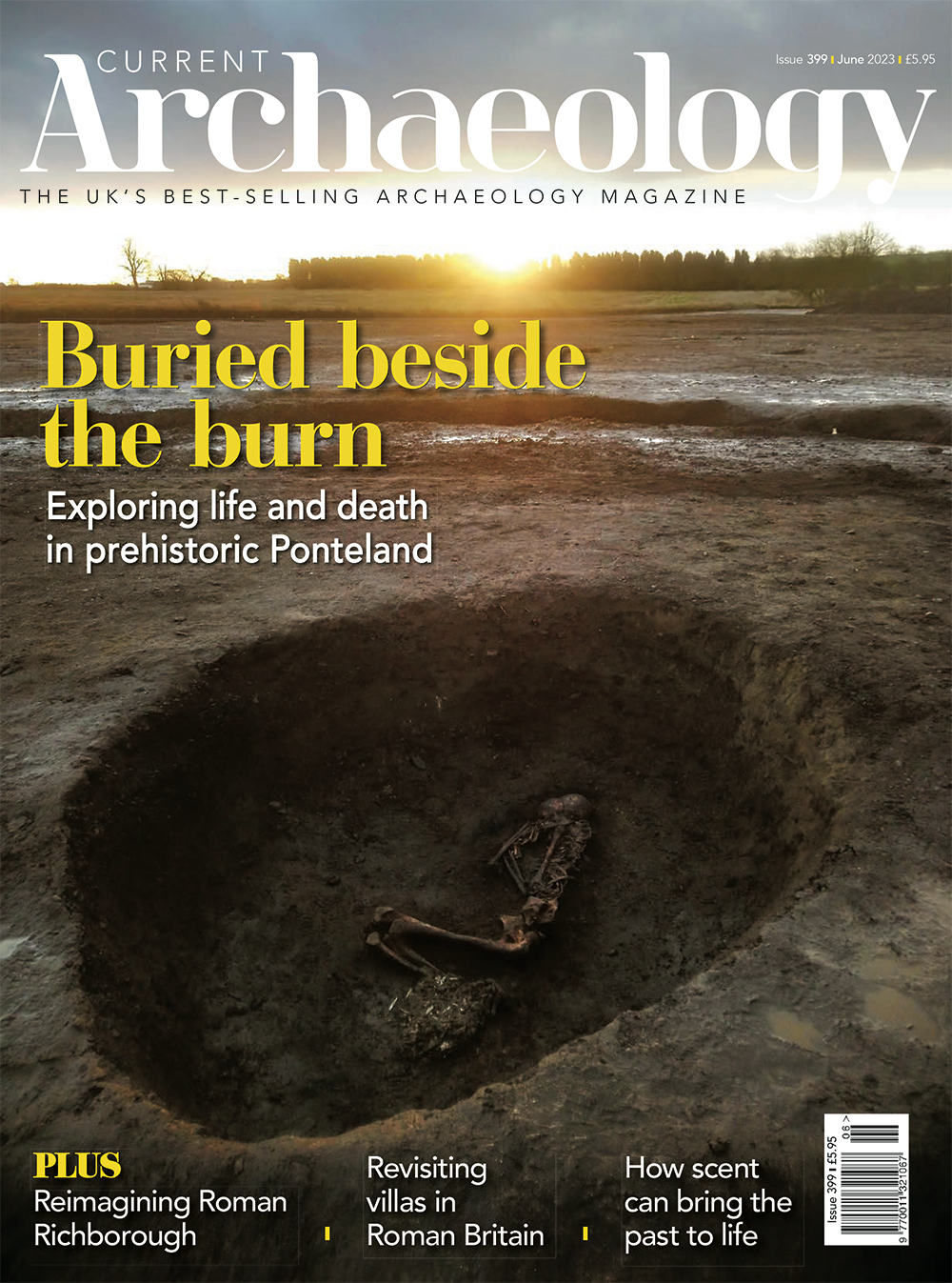Around 4,000 years ago, a teenaged girl was laid to rest in what today is Northumberland, about 12km north-west of Newcastle. She would not be alone for long, as the ringditched monument in which she lay would soon accommodate the remains of at least five more individuals. Now the sequence of these burials and other insights into the area’s prehistoric past have been revealed, as our cover story reports. We also visit rural outposts of empire to explore the latest thinking on Romano-British villas. What light can new discoveries and interpretations shed on their role in the cultural and religious landscape – and is it possible to devise a definition that fits them all?
Remaining in the Roman period, we next visit Richborough Roman fort, which reopened to the public last month. The site museum has been completely transformed, showcasing Richborough’s astonishing wealth of finds: what new stories can these objects tell about the fort and the people who lived and worked there? Our fourth feature spotlights a Shropshire site where a significant example of later prehistoric rock art was uncovered during the digging of a trench for a new fence. We consider the Whixall Stone’s motifs, its contribution to our understanding of ancient artistry, and its uncertain future.
Finally, what does the past smell like to you? Heritage attractions often tap into our sense of smell to help bring history to life, and years after visiting together, my sister and I still use ‘like the JORVIK Viking Centre’ as shorthand for a particular wood-smoky aroma. This month’s ‘In Focus’ features AromaPrime, the company behind many of these scents, which has just celebrated its 50th birthday.

